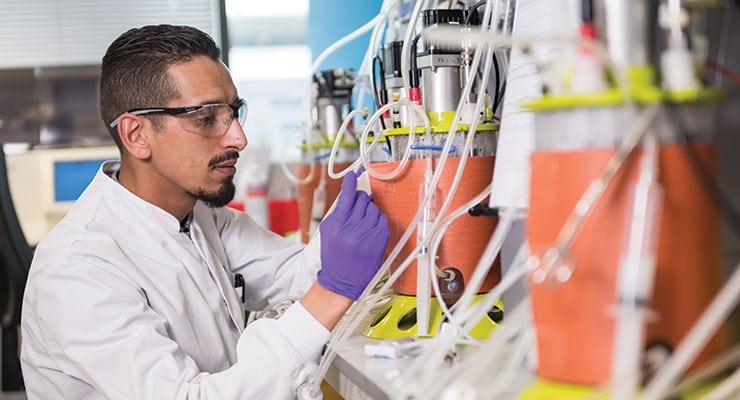As an early-stage or small-sized biotech company, you need to move fast and be nimble. Success is measured in sustained progress towards milestones. Time is not on your side and you need to get it right the first time.
The key to success is understanding that while the fastest path is often tempting, the right path is to ensure product quality and viability while expediting the development timeline. And sometimes, predicting which path will be most successful for your molecule requires serious strategic thinking and experience in key areas such as
- Financial planning
- Cell line development
- Process development
- Technology selection
- Regulatory and risk assessment
Engaging a proven service provider to help prevent missteps and find the best development pathway, can make your program a success.
In this blog post, we have selected a few key considerations for today’s biopharmaceutical executives:
Be sure your clone can go the distance
When developing a cell line for your new molecule, you must identify the best clone, demonstrate proof of concept and satisfy regulators through appropriate testing. When outsourcing cell line development, choose a provider capable of producing high-quality clinical material.
Select the right host
The cell line you choose must be able to produce the biologic of interest. Your clone must produce high quality protein molecules at high titers. Some providers offer proprietary, high-producing cell lines requiring less development time than non-proprietary cell lines. But always keep risk versus cost in mind. A host cell line may come with strings attached. Find out the cost of a license, the expected productivity and the line’s track record in market approvals before you make your selection.
Bank it
Cell banking ensures robustness over development—you will always have access to your clone as it was in the beginning. Cell bank establishment takes 28-30 days, is the first GMP activity and enables the required safety testing.
Demonstrate genetic stability
While high productivity is critical, you need to make sure that your clone is genetically stable so it will continue to produce high titers of the intended molecule. After 60 generations (60 to 120 days of reproduction) with stable productivity and protein quality, the clone is empirically considered stable. To document stability, the cell line must be re-characterized via DNA sequencing and copy number determination. A reliable supply of a stable clone is the solid foundation you need to continue development.
Administer tough love
Bioreactors are rough. Perform robustness studies to determine whether your cells will physically be able to survive the shearing forces and perform as expected in commercial bioprocessing. Subject cells to the same aeration rate, agitation and shear forces they will experience in the scaled-up environment. By ensuring that productivity and product quality are maintained, you will avoid the heartache of having to start from scratch because of cells that are too delicate for the bioreactor.
Choose efficiency and viability over speed
Process efficiency and viability should be addressed during the early clinical stages. Often, they are not: companies focus on speed, move forward with imperfect processes and encounter manufacturing and economic problems down the road. Problems run the gamut—inefficient production making the drug too expensive; products and technologies not scalable or compatible with quality and regulatory requirements; poor analytical package or weak product characterization lowers the perceived value of the drug. In developing your process, take a long view to ensure the product will be commercially viable.
Ensure the process is efficient and viable
A viable process is one that is robust and helps you achieve favorable economics of the project and the product. It can be tested by the reproducibility in scale-up, tech transfer to other operation sites and implementation. An efficient process is one that has few wasteful steps and has optimized multi-work area capacity utilization.
Optimize upstream process
Upstream optimization is key to increasing productivity and reducing production cost per gram. This involves media selection, feed selection and optimization of culture conditions. It is a balance and you have to consider the clone, media, feed and culture conditions all together.
Consider expected cost of end-product
A poorly developed process could result in a product that is too expensive to produce, negatively impacting commercial success. Consider these factors that have economic impact early on: the cost of raw materials, upstream titers, downstream efficiency, dose per patient and the urgency of market need. Determine the optimal yield for your process, realizing that it may not be the maximal yield.
Access the full article to read about key decisions in technology selection and regulatory & risk assessment.








